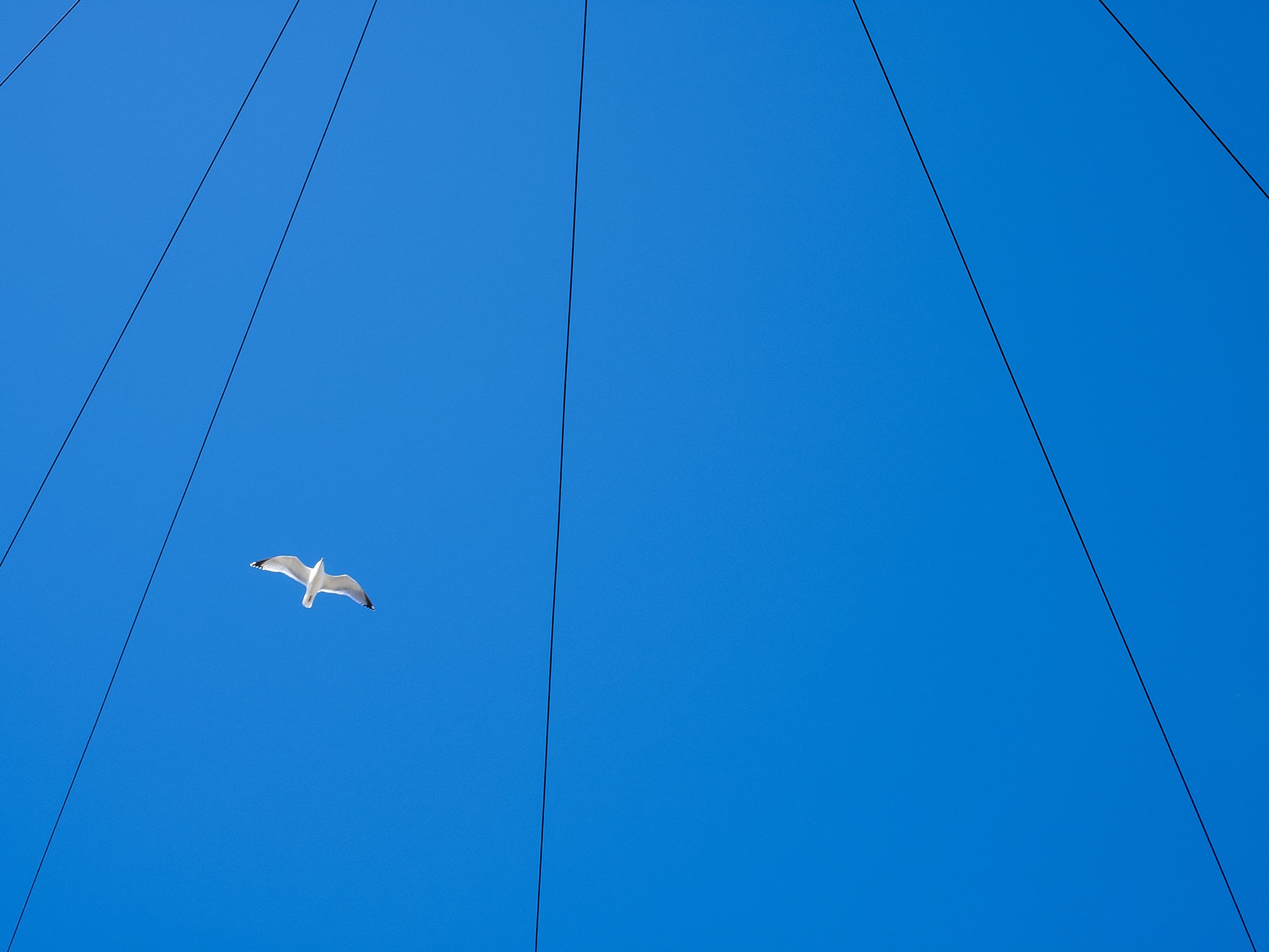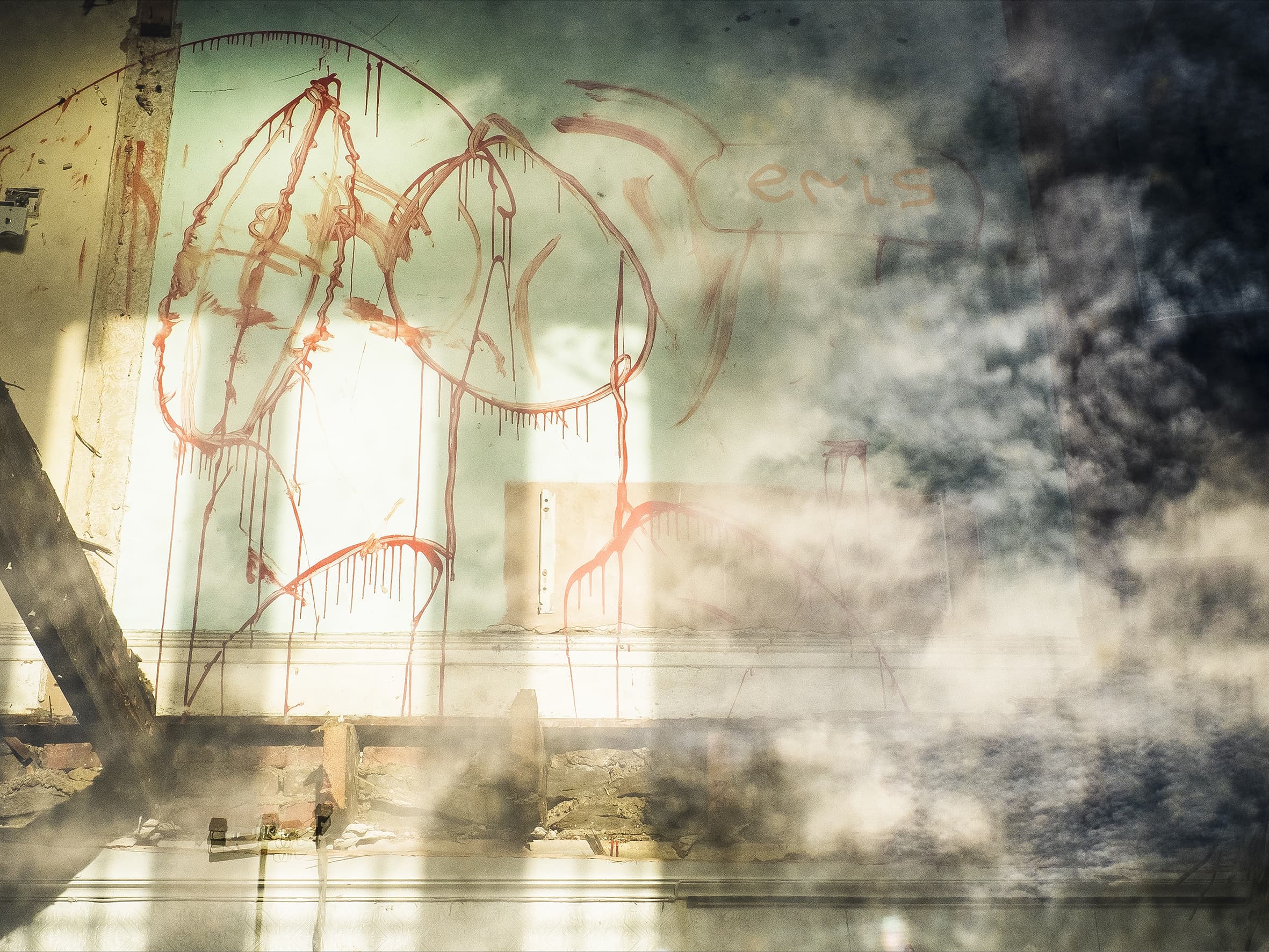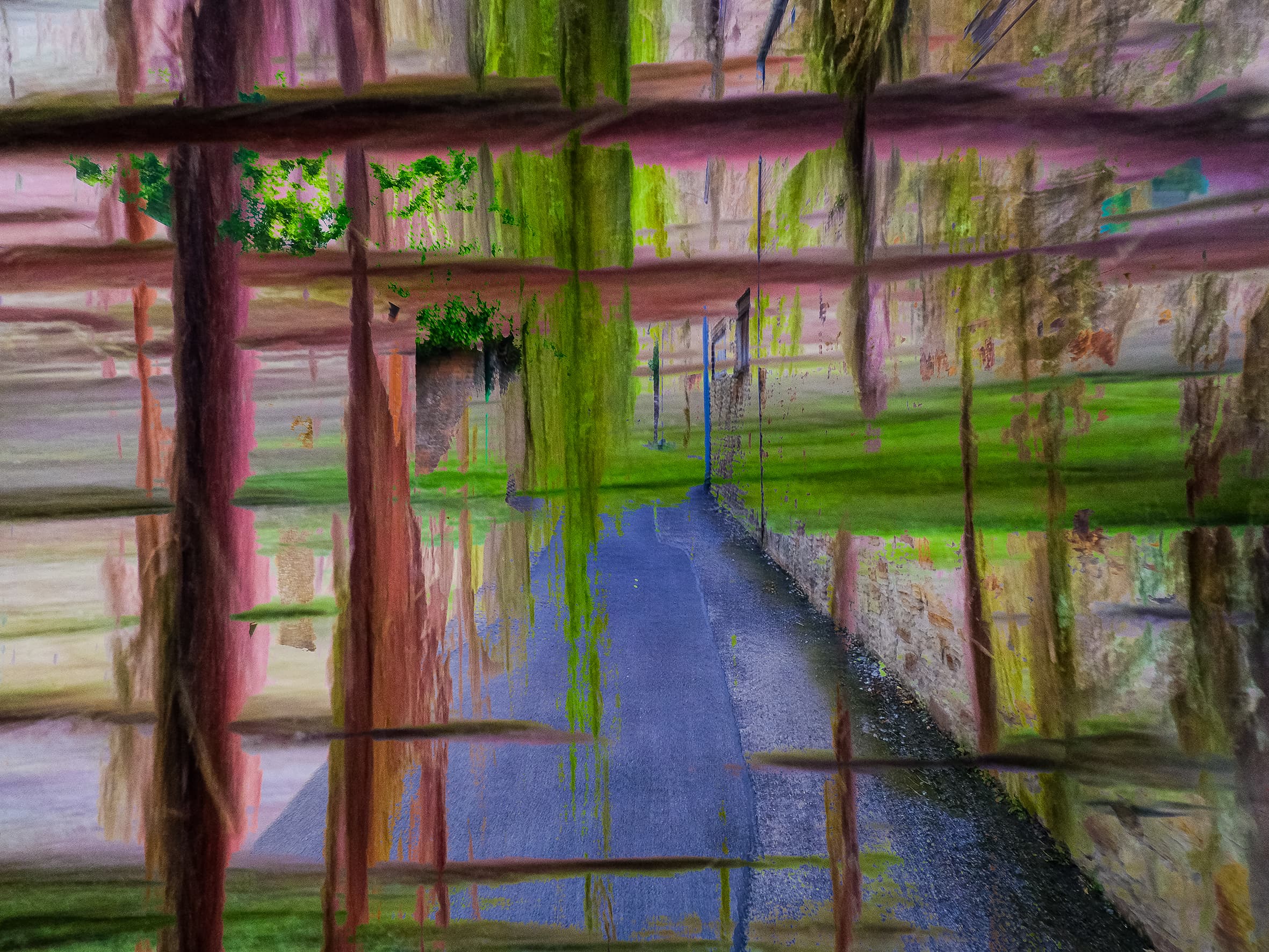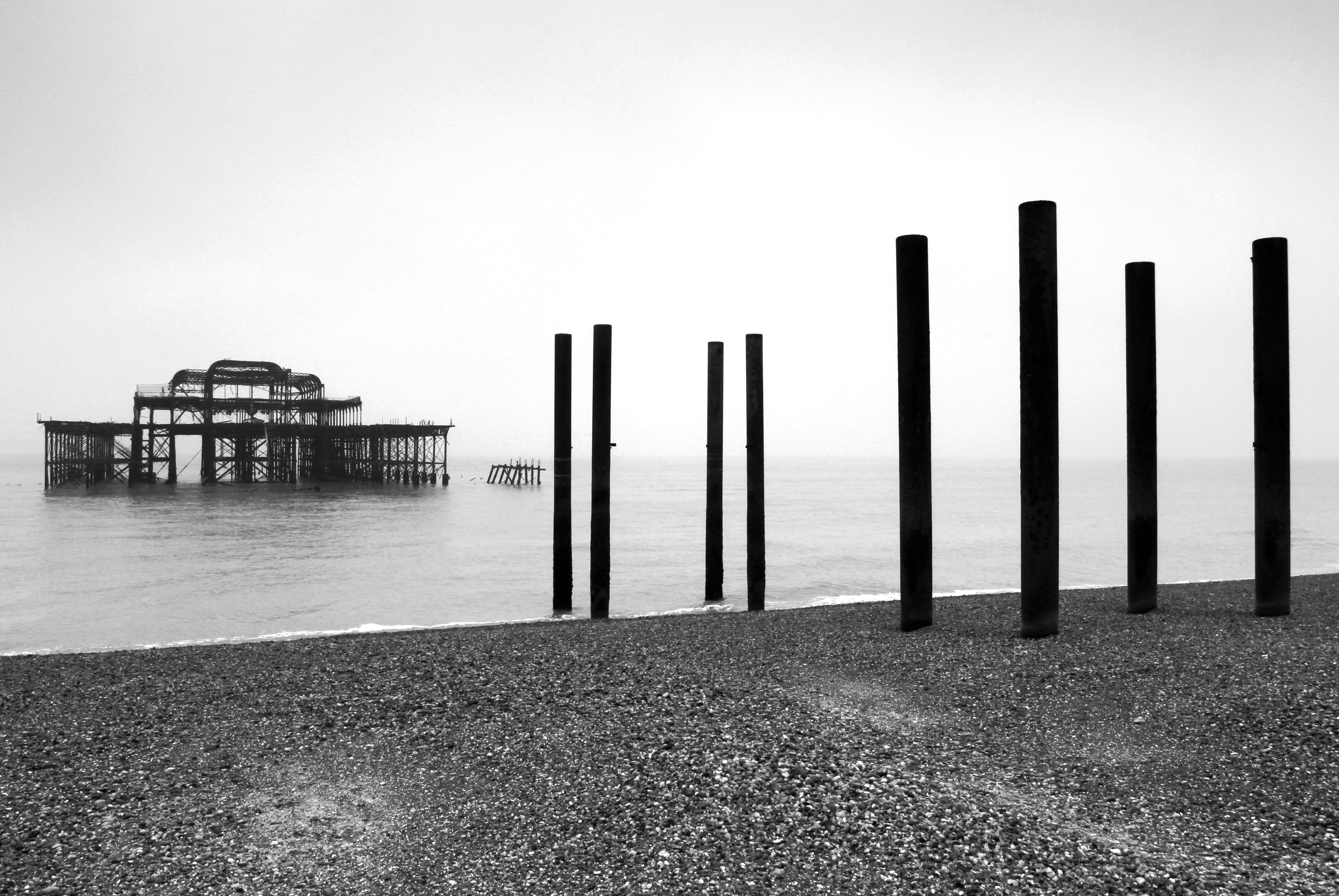How can you be a more mindful photographer? Tracy Calder speaks to two professionals for whom it’s not just a practice, but a way of life…
Lee Aspland

Lee Aspland Lee is a photographer, author and mindful practitioner. His photographs capture a moment in time, a feeling, a thought, a hope or fear. His health crisis in midlife led to an exploration of who he was before and who he is now. He uses these experiences, and the knowledge he has gained, to help others understand their own journey via Mindful Photography. Lee’s latest course Mindful Photography 101 is now live, see here.

Lee was following a ‘sun salutation’ practice from his eBook ‘Photography for Well-Being’ when he looked up, saw the lines, and the seagull flew in
A few years ago a group of students on Lee Aspland’s Mindful Photography course were asked to do something that triggered all kinds of uncomfortable emotions. After a fruitful session creating pictures they returned to class only to be told, ‘Now before you look at the photos I want you to delete them all.’ Faces dropped, and a feeling of confusion permeated the room. ‘Most of them couldn’t do it,’ laughs Lee. Despite his students’ reservations, it’s a request he’s made numerous times since.
In his book Full Catastrophe Living, Jon Kabat-Zinn describes seven attitudinal factors that form the major pillars of mindfulness practice: non-judging, patience, beginner’s mind, trust, non-striving, acceptance and letting go. Lee’s ‘delete’ exercise encourages students to strengthen this final pillar. Lee’s introduction to mindfulness came by way of a life-changing event. ‘I had acute health problems in 2006 and within a year I had to leave my job because my wellbeing was being compromised,’ he reveals. His colleagues had a whip-round, and he decided to put the money towards a DSLR.

On reflection, he believes his decision to develop a mindfulness practice, and combine it with photography, was a way of coping with the rocky emotional terrain that lay ahead. It took two years before his condition was described as chronic but stable, but by 2009 he was offering his services to the public, and four years later he began running Mindful Photography courses.
Mindfulness is a word that’s bandied about a lot these days – everyone from Ruby Wax to Hugh Jackman seems to be using it – but there can be some confusion as to what the term actually means. ‘I can explain it in two words,’ says Lee, ‘paying attention!’. It might sound easy, but paying attention to thoughts, sensations, feelings and emotions, without judging them, is challenging. ‘It’s relatively easy to write about or understand on the surface, but to truly understand how to be mindful you’ve got to do it, practise it, and then you realise that it’s not easy at all,’ he warns.

Lee begins each session with a short meditation, which provides an opportunity to slow down. ‘Everyone sits quietly while I talk through a meditation focusing on sensations,’ he explains. ‘I go through each sense in turn.’ After five minutes, the participants get up and start walking around. At this point Lee reminds them that they’re not looking for a picture. ‘They are just noticing what they can see,’ he explains. ‘Some people will say, “I’m going out with my camera, how can I not look for a photo?” and I tell them, “notice what’s there and the photo will come to you.”’ When an opportunity presents itself, students stop, rest and look at what caught their attention.
‘You need to notice the thinking that goes on, and rest with the visual,’ says Lee. The final step is the creation of a photograph. To stop people getting hung up on technique, Lee suggests keeping gear and approach simple. ‘If you’ve got a 50mm (or equivalent) lens then use it, because it’s similar to the way you see,’ he advises. ‘Slowing down starts with the way you set up your camera – I don’t let people review images on their LCD screen, for example, and I limit how many pictures they can take in one session.’ Before releasing the shutter students are encouraged to think about how they will use the camera to express what attracted them to the subject. Having paused, observed and rested, the shutter is opened and the picture is received.
Lee’s four-stage seeing practice
1. Anchor
Take a moment. Notice the breeze on your cheek and any smells. Tune into your visual experience. Notice colours, lines, shapes, textures, bright areas and any shadows. Spend at least five minutes paying attention to what you see. If your mind wanders, return to what you see – this is your anchor.
2. Seeing
Walk at a gentle pace observing, without looking, for a photo opportunity. Wait for something to catch your eye. Now stop – you have become attuned to your visual experience.
3. Resting
Really look at what stopped you. Stay with the visual experience, and breathe. Notice any thoughts, ideas, action or internal chatter that arises. Just come back to the visual experience.
4. Creating
Consider how you will use your camera to best express what stopped you. Will you need to move closer or further away? What will you include in the frame? Don’t overthink the photo to create a ‘better’ image. Press the shutter and receive the photo.
Kim Fuller

Kim Fuller Kim has been a professional photographer for over 30 years and has found the process of looking through her lens to be very mindful. She is an author (her book Finding won a gold medal in the Nautilus Book Awards), TEDx speaker, teacher and mindfulness coach and has developed a method called P.A.U.S.E to help people mindfully navigate relationships. Learn more about her course here.
In 2005 Kim Fuller was hired to photograph His Holiness the Dalai Lama at Salve Regina University, USA. Having been assigned a seat three rows from the stage she was feeling miffed as the access she’d been promised had suddenly been withdrawn. ‘When he entered the back of the tent, however, the energy shifted,’ she recalls.

For Kim, this image is an expression of wabi-sabi – seeing the beauty in all things imperfect
‘Everyone was so excited, smiling and reaching out to touch his hand.’ But Kim couldn’t shake her disappointment as she watched another photographer snapping away at his side. As the guest of honour made his way forward, Kim began to calm down, and managed to secure a shot of him shaking hands with some students behind her. ‘For whatever reason, I felt I had to put my camera down after that and just be present,’ she explains. Having crossed the aisle to greet more guests, he suddenly turned back to Kim and reached out his hand. ‘Because my camera was down, I was able to lock eyes with him and take his hand,’ she reveals. ‘In that moment, my whole being shifted.’
By her own admission, the pictures Kim took that day weren’t perfect, but the experience led her to start meditating. Sitting in silence she began to realise that her camera and her mind saw things in very different ways – one documents what is actually there, while the other overlays these facts with emotions, opinions and preconceptions. Diving deeper, she read every book by the Dalai Lama and numerous texts by Jon Kabat-Zinn, Jack Kornfield, Sharon Salzberg and Yongey Mingyur Rinpoche.

When you set an intention to pay attention, the beauty in the world becomes apparent
As a result, her definition of mindfulness is now crystal clear. ‘Mindfulness is paying attention to a particular thing, in a particular way, without judgement,’ she says. ‘Mindful photography is also about paying attention (through the lens) to a particular thing, in a particular way (through your own view of the object) and then documenting that object.’ The more she meditated, the more Kim realised that she had been practising mindfulness before she even knew what it was. ‘Every time I pick up my camera I’m setting an intention to pay attention, carefully,’ she explains. ‘It makes me slow down and see the beauty in the world that I might have missed.’
As she became more aware of herself through her practice she also became more aware of others – resulting in some beautifully empathetic portraits. ‘Photography gives me the opportunity to really see someone,’ she explains, ‘The subject, in a sense, gives me permission to look carefully at who they are and connect on a soul level. I don’t just take their photo, they give me something by connecting with me through a look, an expression or in their body language. No words need to be exchanged.’

Try to see your subject as a combination of shapes, colours, textures, lines and light
When she works with clients, Kim discusses any concerns they have about being in front of the camera, and gently puts them at ease. ‘I take the time to see them as they are and not how I want them to be,’ she explains. ‘I get a more authentic portrait when I do this. When I’m calm, they become calm. You get back what you put out!’ According to Kim, we are all connected by our desire to be happy and our common sufferings (whatever they might be). When we practice compassion and empathy we begin to understand this connection better. Ultimately, adopting a more mindful approach to our work, and our lives, has the potential to make us better people, as well as better photographers.
Kim’s P.A.U.S.E™ method
P Pause, slow down and take a few deep breaths.
A Become Aware of your surroundings, how you feel in your body, and what you see that attracts your eye. Notice any thoughts that you have about your subject: I like it, I don’t like it, it’s not pretty enough to photograph etc.
U Understand that this is simply a perception that can be changed. Understand that everything changes.
S Shift that perspective and try to see your subject as colour, shape, texture, lines and light. Be aware of what is possible in this moment.
E Explore a new way to photograph your subject – consider an abstract, a block of colour, a shape or even a texture. Can you make something ordinary extraordinary?
Tracy Calder

Tracy Calder Tracy has more than 20 years of experience in the photo magazine industry, and is a former editor of Outdoor Photography. In 2018 she co-founded Close-Up Photographer of the Year (www.cupoty.com). Her work has appeared on the walls of The Photographers’ Gallery and The National Portrait Gallery. She is a regular teacher at West Dean College of Art & Design. See @tracy_calder_photo.
Like many of us, my head is full of monkey chatter. Whether I’m waiting for the kettle to boil, watching a film, or planning a photo shoot, my mind wanders to the weirdest of places. Last week, for instance, I was setting up my gear when I began to wonder who authorised Bouncer’s dream sequence for that infamous 1991 episode of Neighbours. The point is, within seconds of attaching camera to tripod I was lost in thought, and taking pictures on autopilot. Research suggests I’m not alone.

When you notice distracting thoughts, label them and just let them go, a sense of calmness arises
Most of us are thinking, judging and appraising all the time. Unfortunately, much of this self-talk is negative – you might set up your camera and then berate yourself for not knowing how to change the white balance, for example, or look at a subject and wish it was more interesting, beautiful or photogenic. Without realising it, you can even time travel – I’ll be the first to admit that I once spent a lengthy photo shoot planning a refurb of my living room in my head.
The brain, it seems, likes nothing more than drifting off to the past or projecting into the future. In fairness, some of this chatter is quite useful. When you look through the viewfinder and see dirt and dust it seems perfectly reasonable to plan a thorough clean of your equipment, for example.

Sometimes the space between objects can have as much energy and importance as the objects themselves
Unfortunately, it rarely ends there. Thoughts about cleaning the lens lead to thoughts about buying a new one, and buying a new one leads to thoughts about finances, and thoughts about finances… well, you know where this is heading. Some people liken these thoughts to cars rushing down a motorway – instead of sitting by the road letting them pass, we tend to pick one, chase it, and then get caught in the traffic. When your mind is full of monkey chatter, there’s no room for creativity.
On the flip side, if your mind is calm and receptive you’re able to see more clearly, and express yourself with greater clarity. So how do you reach this magical state of receptivity? Well, to begin with, you need to accept that this chatter can’t be silenced – it’s a natural part of being human. I’ve read countless articles suggesting that the aim of mindfulness and meditation (which is just one way of cultivating mindfulness) is to empty your mind and silence the chatter.

When you stop thinking of a subject as ugly or beautiful you can begin to appreciate it as a collection of shapes
It’s not true; and it’s not possible. In fact, the first thing you need to do is notice these thoughts, feelings and emotions as they arise. If there is an aim to mindfulness, it’s becoming an impartial observer to the inner workings of your mind. The word ‘impartial’ is crucial. When you learn to acknowledge these thoughts and let them go you don’t get caught up in their story. Personally, I find it helpful to label each thought as it arrives, so, if I find myself thinking, ‘what’s the point of taking this picture, I’ll never be Ansel Adams,’ I just say ‘comparison’ in my head, and let it go. Each thought, belief, opinion and emotion is treated equally. You might find you need to acknowledge, label and let go hundreds of times. So be it.
With practice, the monkey chatter will almost certainly reduce in frequency, leaving you with more headspace and more room for creativity. Recognising and observing this inner voice is just one aspect of mindfulness but, for me, the benefits are manifold.
Tracy’s advice on moving beyond boredom
One of my favourite photographic quotes comes from the late Diane Arbus. ‘The Chinese have a theory that you pass through boredom into fascination and I think it’s true.’ One way of passing through boredom is to take an everyday object and explore it in as many ways as possible.
For this exercise select an object that, in your opinion, has no aesthetic value: a cup, a plug socket or bin lid, for example. For the next ten minutes keep your camera close by, but leave it switched off. Give your full attention to the object, notice texture, lines, patterns, shapes and shadows. View your subject from every angle. Without trying to produce a ‘good’ photograph, pick up your camera and start creating. When you feel bored, just acknowledge the feeling and carry on. Just remember, the object itself cannot be boring – you have just labelled it as such.







